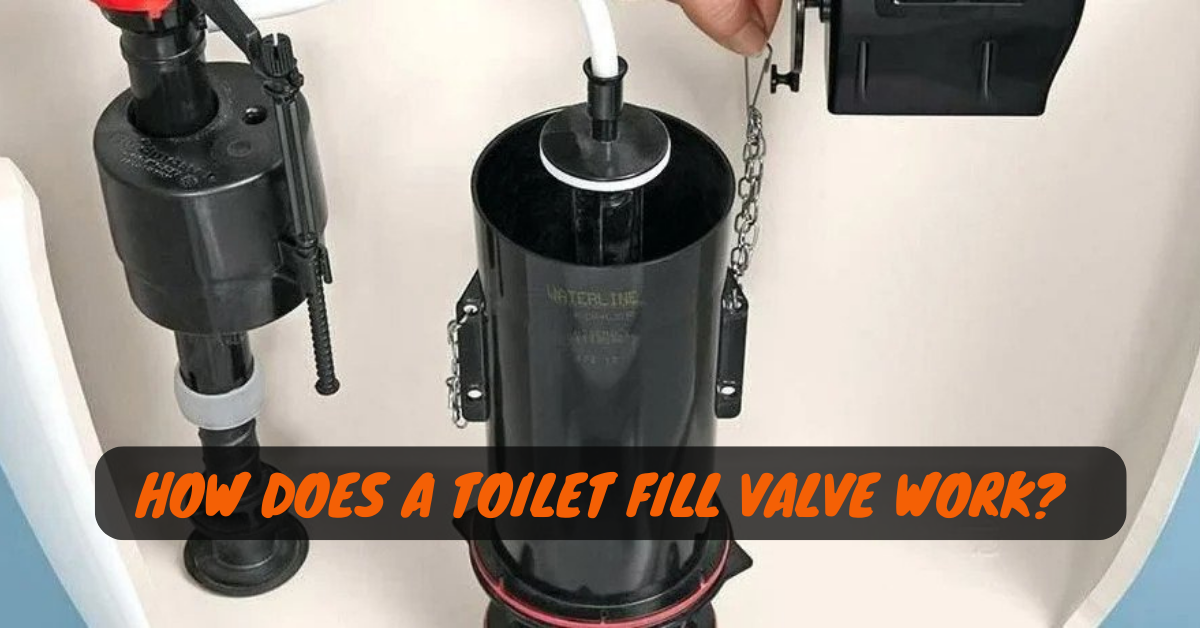Do you ever wonder how the parts of a toilet tank work? Every time you use flush, it fills up with some more water. It is quite impressive. But how does it work on its own?
You may have heard a hissing sound coming from your tank right after your every flush, haven’t you? Well, the sound is coming from the fill valve actually. It works like the power core of the toilet tank.
If you are curious about the mechanism inside it, we’re here to explain everything. Let’s get to the point of how does a toilet fill valve work?
Also Read: 10 Best Toilet Fill Valve for Hard Water
Everything About a Toilet Fill Valve.

First of all, let’s introduce what a fill valve is. A toilet fill valve is a piece of plastic or metal inside a tank which is about 3-4 inches in size. The work of a fill valve is simple. After every flush, it fills the required amount of water inside the toilet tank.
This piece of metal or plastic is generally located at the left part of your toilet tank. A water supply line gets connected to this fill valve underneath the tank. It further connects with the toilet shut-off valve.
A toilet shut-off valve is a wall-mounted water supplier which supplies the water through the pipeline. Now where the bottom of the toilet fill valve remains adjacent to the shut-off valve through the supply line, the top of the fill valve remains connected with a floating cup or ball.
A floating arm assists the floating cup or ball. The work of this ball is to keep up the exact amount of water inside the tank. It helps the fill valve. When the water is too low, the ball gives signals to the fill valve to fill the tank with water.
On the other hand, when the fill valve is about to overflow the tank, it signals to stop filling the water.
How Does It Work?

Now here we’re going to show you how a toilet fill valve works step by step.
Step 1
To understand the work of the toilet fill valve, you must first know how the other parts work. To do that, you need to pull your flush chain. When you pull the chain or handle, the water inside a toilet tank starts to get down to the toilet bowl.
The toilet flush chain connects to the flapper underneath the flush valve. When you flush, you force the flapper to displace. That’s why the water in your tank can get through the flush valve down to the bowl.
Step 2
Now, when the tank is almost empty, the floating ball comes down with the water. At a certain level, it starts sending a signal to the toilet fill valve to gain the level of water. The flapper inside the tank retakes its place, so that water cannot get through the flush valve.
The ball stops the fill valve from filling when the water gains its level up to the expected mark. Any excess amount of water gets through another overflow tube.
Step 3
After filling the water, the fill valve stops its work for a while till you pull the flush valve next time. It will stand by for the signal of the floating ball.
Read: What is a Toilet Fill Valve?
Conclusion
The fill valve is the most important part of your toilet tank. It works perfectly with the help of a floating ball or cup. If the fill valve stops working, then the work of the whole toilet tank will be in vain.
So, when your toilet tank is not filling up properly, the first thing you should look for is whether the fill valve is working on not. That’s all for today, buddy. Catch you on the next article.
Read: 10 Best Toilet Fill Valve for Hard Water
FAQ:
How long should a toilet fill valve last?

You can expect full service from a toilet fill valve for about 3 or 4 years. But this time can vary depending on the usage or types of water you use. Besides, you can end up with a clogged valve for various reasons.
Is it hard to replace a toilet fill valve?

Not at all. You can replace a toilet fill valve on your own. You need some plumbing parts and need to act cautiously since almost everything inside a toilet tank is fragile and vulnerable.
Are all toilet fill valves the same size?
There are actually various sizes of valves available on the market. Newer toilets have fill valves of almost the same size. The older toilet has a bit longer valve, though.
